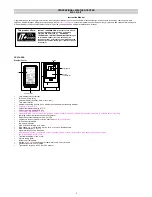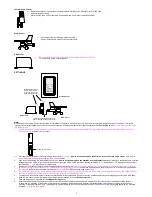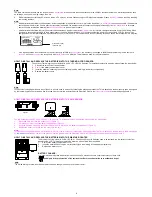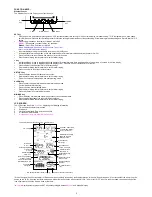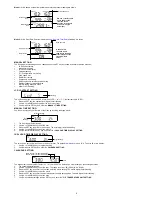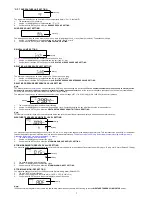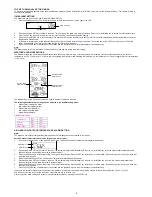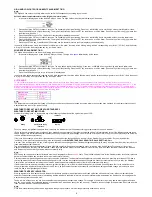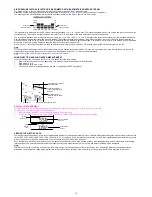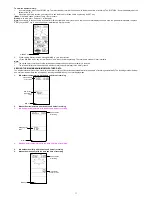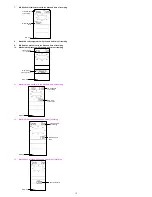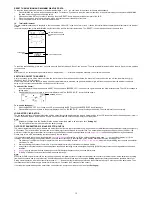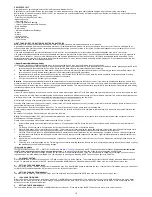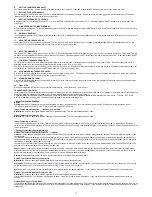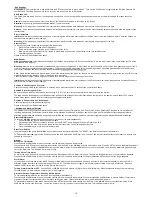
3
Cable connection between the wind
sensor and the thermo-hygro sensor
Wireless transmission
at 915 MHz - thermo-
hygro and rain sensor
to the Weather Center
Weather Center
Wind sensor
Rain sensor
Sockets for wind sensor
Thermo-hygro Sensor
•
Remote transmission of the outdoor temperature and humidity to the Weather Center at 915 MHz
•
Weather-resistant casing
•
Wall mounting case (to be mounted in a sheltered place. Avoid direct rain and sunshine)
Wind Sensor
•
Connected to the thermo-hygro sensor by cable
•
Can be installed onto a mast or a horizontal panel
Rain Sensor
•
Remote transmission of the rainfall data to the Weather Center at 915 MHz
•
To be mounted onto a horizontal panel
SETTING UP:
Note:
When putting the Weather Center into operation, it is important to perform in close proximity (e.g. on a table) a complete wiring and set-up of the system. This step is
important to test all components for correct function before placing and mounting them at their final destinations (See
Positioning
below).
Spin the wind vane and tip the
rain gauge to test.
1.
Unwind the cables of the Wind sensor. Connect the Wind sensor to the Thermo-hygro transmitter by plugging the connector head into the socket of the Thermo-
hygro sensor.
Cord should “click” into place.
2.
First insert the batteries into the Thermo-hygro sensor and
Rain sensor
“
How to install and replace the batteries into the Thermo-hygro sensor
“ and
“
How to
install and replace the batteries into the Rain sensor
”
below).
3.
Then insert the batteries into the Weather Center (see “
How to install and replace the batteries into the Weather Center
”
below
)
. Once the batteries are installed,
all segments of the LCD will light up briefly and a short signal tone will be heard. It will then display the time as
12:00
, the date as 1.1.05, the weather icons, and air
pressure value. "- - -" will be shown for outdoor data.
4.
Afterwards, the Weather Center will start receiving data from the transmitter.
The transmission reception icon will be blinking to indicate that the station is trying to
get the thermo-hygro transmitter data. The outdoor temperature, humidity, wind data
should then be displayed on the Weather Center. If this does not happen after
135 seconds
, the batteries will need to be removed
from all units.
You will have to start again from
step 2
.
5.
The transmitter reception icon is now blinking again to indicate that the station is trying to get the rain sensor data. It will stop blinking once the rain sensor has been
detected. If this does not happen after 135 seconds, you will need to start again from step 2
.
6.
You may need to check the cable for correct connection and all the components for correct function by manually turning the wind-gauge by moving the wind-vane;
tilting the rain sensor to hear the impact of the internal moving seesaw, etc. (see
Positioning
below).
7.
Time and date shall be manually set (See
Manual Setting
below).
8.
After the Weather Center has been checked for correct function with regard to the above points and found fit, the initial set up of the weather station system is
finished and the mounting of the system components can take place. It must be ensured however that all components work properly together at their chosen
mounting or standing locations. If e.g. there appear to be problems with the 915 MHz radio transmission,
they can be overcome
by slightly changing the mounting
locations
or turning the base station
.


